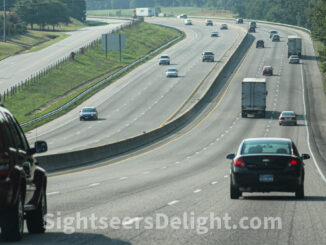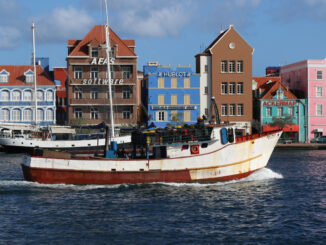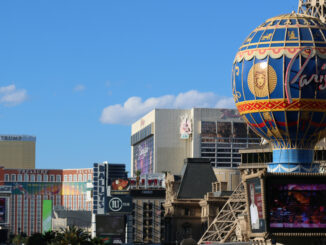LAS VEGAS — Most retellings of Las Vegas’ history focus on the mob, casinos or the evolution of the neon sign.
Since March 2005, the National Atomic Testing Museum has focused its attention on a more ominous bit of Sin City’s history: its connection to nuclear testing and the development of atomic bombs.
The nearby Nevada Test Site (now officially renamed the Nevada National Security Site) served as a testing site for nuclear devices starting in 1951. And for visitors of Vegas who are focused on glitz and glamour, the museum offers a dose of unexpected history on a subject that has been controversial and debated for seven decades.
The museum “tells the story of America’s nuclear testing program at the Nevada test site. But it’s also of the nation’s nuclear testing program,” said Karen Green, the museum’s curator.
The world changed forever on Aug. 6, 1945, when the first atomic bomb was dropped on Hiroshima, sparking a a nuclear arms race during the Cold War. In the years and decades that followed World War II, Las Vegas grew into a popular destination for tourists wanting to see the large mushroom clouds at the nearby testing site.
In addition to the actual testing, the museum looks at life at the site and its impact on the surrounding communities. The test site was responsible for “doubling, then tripling” the population of Las Vegas during the 1950s and 1960s.
“I think most people expect it to be pretty darn boring, number one,” Green said. “And they’re absolutely amazed that, one, we tested in Nevada — most people don’t believe that. Two, we tested over 1,000 atomic bombs in Nevada, and that it was 63 miles from Las Vegas.
That aspect of the city’s growth was the focus of “Building Atomic Vegas,” an exhibit that ran through early 2012.
The museum’s collection includes more than 12,000 artifacts, including radiation testing devices, Geiger counters and pop culture memorabilia while “Ground Zero Theater” simulates the detonation of an atomic bomb.
“If you don’t understand the Cold War and World War II and that history, it’s very hard to understand why a nation would develop an atomic bomb, why we used an atomic bomb and then why we continue to test it,” Green said. “They think it’s the past when it’s still the present. We still test bombs. We do it sub-critically now.”
In December 2011, the museum was designated as a national museum and is today affiliated with the Smithsonian Institution. As part of the designation, the museum has shifted its focus from a regional museum to a national museum, dedicated to telling the country’s history of nuclear development.
“We use lessons of the past and present to better understand the extent and effect of nuclear testing,” Green said.
“This is a pretty amazing place for a very serious discussion,” Green said. “We like to consider ourselves a place where people can come to discuss some difficult subjects that normally you don’t see discussed anywhere.”
For more information, visit www.nationalatomictestingmuseum.org.





